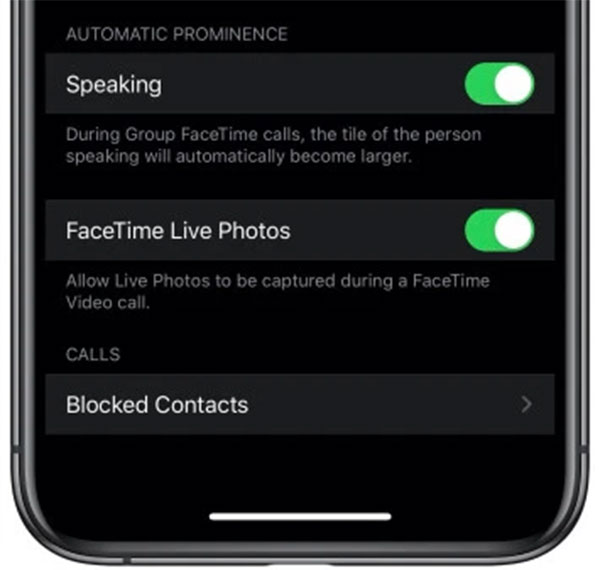Apple is currently letting developers beta test its iOS 13.5 release with a release to the public likely imminent. The same update brings with it the much talked about coronavirus contact tracing API, but there’s another change that many people working from home will be pleased to see.
With iOS 13.5, users will be able to disable FaceTime’s face zooming feature.

In its current state, FaceTime will zoom into the face of a person who is talking during a group video call. That makes them appear larger than everyone else which at first seems like a good idea. But it’s hugely disorienting when you’re in a call with a ton of people with faces moving all over the screen.
Apple seems to have now sussed that this isn’t as great as it thought, so it’s great to see an option added to disable it at a time when everyone is using it more because of lockdowns.
In order to disable the automatic zooming:
Step 1: Launch the Settings app and head over to FaceTime settings.
Step2: Scroll down and locate the section labeled Automatic Prominence. Here, simply turn off the toggle switch for Speaking.

Users who have the zoom feature disabled can still make a face larger on-demand by tapping twice.
Group FaceTime supports up to 32 people at a single time, so having it switch between multiple faces in quick succession is the kind of thing that would quickly drive us insane. We’re glad to see we aren’t alone.
With iOS 13.5 now in beta we’re seeing more changes, too. The iOS lock screen now notices when someone is wearing a face mask, automatically skipping Face ID authentication and requesting a passcode be entered.
You may also like to check out:
- Download: iOS 13.5 Beta 3 IPSW Links, OTA Update Along With iPadOS 13.5 Beta 3 Released
- iPhone SE 2 2020 Screen Protector: Here Are The Best You Can Buy Today [List]
- iPhone SE 2 2020 Case: Here Are The Best Ones You Can Get Today [List]
- Kodi 18.6 IPA APK Download For iOS 13 / iPadOS 13, Android Released
- Run Multiple 2 WhatsApp Accounts Number On 1 iPhone The Right Way, Here’s How
- Download: iOS 13.4.1 IPSW Links, OTA Update Released Along With iPadOS 13.4.1 Released
- Jailbreak iPhone 11 Pro Max With Unc0ver 4.0.0 On iOS 13.3 Now
- Checkra1n For Windows Alternative: How To Use Ra1nUSB For iOS 13.3 Jailbreak
- Jailbreak iOS 13.4.1 / iPadOS 13.4.1 Using Checkra1n, Here’s How [Guide]
- Downgrade iOS 13.4.1 To iOS 13.3.1 For Checkra1n Jailbreak, Here’s How
- Apple Watch ECG App Hack: Enable Outside US In Unsupported Country On Series 5 & 4 Without Jailbreak
You can follow us on Twitter, or Instagram, and even like our Facebook page to keep yourself updated on all the latest from Microsoft, Google, Apple, and the Web.

